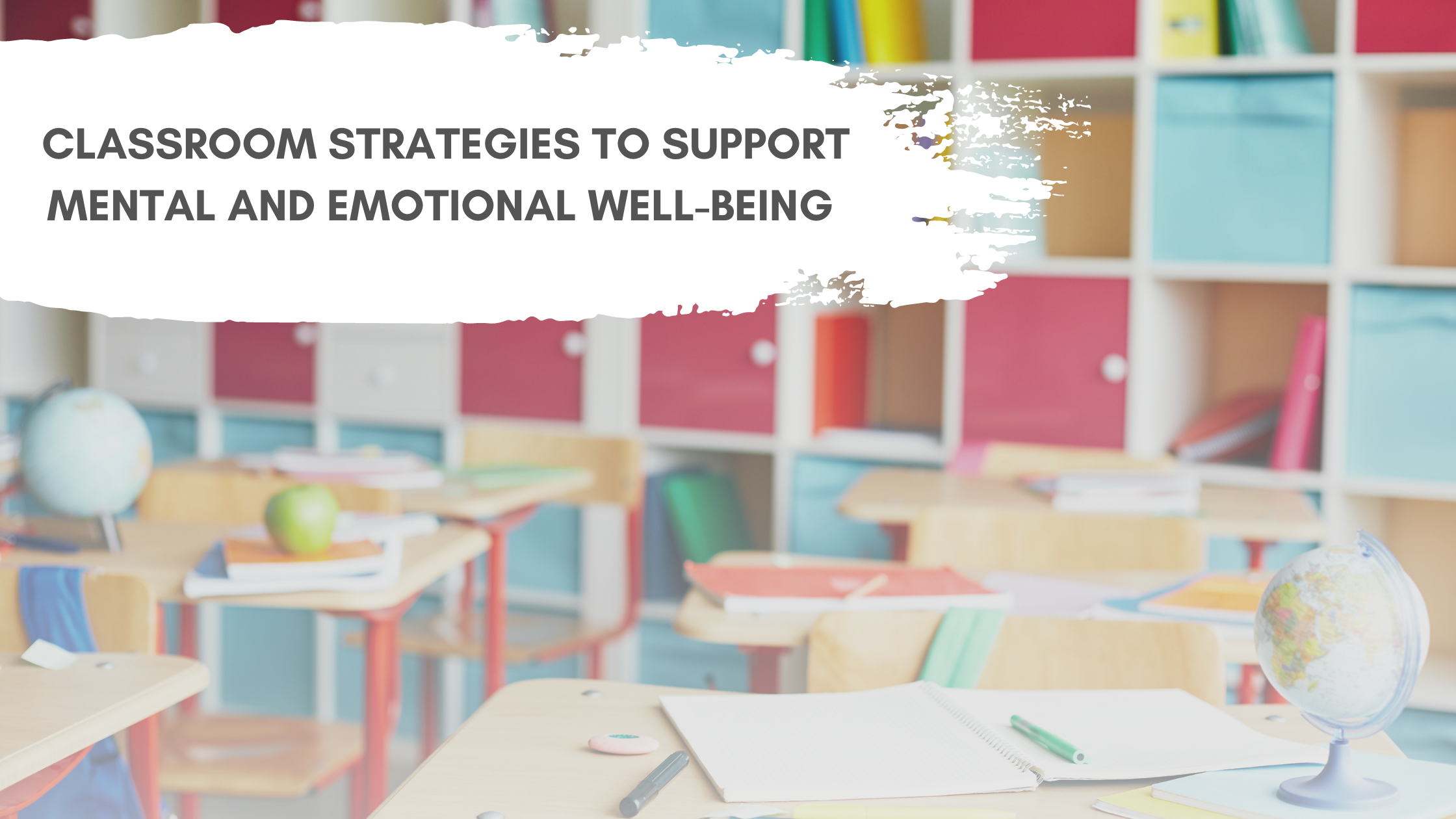Classroom Strategies to support mental and emotional well-being
The middle of August is here! I know there are many teachers thinking about the start of the school year. Their minds are filled with questions regarding the numbers of students, varying needs, schedules, and classroom set-up. For teachers, the middle of August is often accompanied by tension and fear of the unknown.
All of these worries are a part of a teacher’s life. Not to mention how classroom dynamics have shifted since the pandemic hit. Although things seem to be settling down a bit, I believe we’re not through it yet. As most kids return to school in September, there are bound to be many more responsibilities put upon our teaching staff.
Mental and emotional support for our youth will be the front runner. Not only will staff be responsible for the academic and physical needs, they also will have to be aware of our kid’s mental health! Talk about a lot of responsibility.
After everything we’ve been through the last few years, how do we help our young generation cope with worries, fear, and anxiety? How do we support this struggling generation as they improve their self-esteem, self-awareness and form better connections? We must provide teachers, parents, caregivers, and coaches with strategies and techniques to help children thrive in today’s world!
I believe there are certain exercises and strategies that teachers can implement into their daily classroom routine that would help kids to understand themselves better and provide a calmer classroom environment. The best thing about these exercises is they help to form connection and compassion. I believe compassion is the foundation for uniting humanity. So, let’s be a part of the village needed to raise compassionate youth!
Here are some strategies you may like to try. They are easy to incorporate and take only 15 minutes of your day! I guarantee that if you implement these strategies into your daily teaching routine, your teaching day will be smoother, calmer, and much more enjoyable!
1. Begin the day with breathing. Have kids sit at their desks or their tables and just breathe. For younger kids, you can start with 1- 2 minutes; as they get comfortable with it, you may like to increase the time. Older kids can begin with 2-3 minutes. If you want, you can put on relaxing music in the background. This is an excellent tool to get the kids grounded and centered, as well, release anything that may have happened at home or on the way to school that hasn’t been a positive start to their day.
2. Incorporate gratitude and affirmations into their daily writing activities or journal exercises. One day you can do gratitude, and then switch it up to affirmations the next day. Have them write out 3-5 affirmations and then continue with their writing assignment. Here are some examples.
I am brave, I am kind, I am enough
I am grateful for who I am because…
I am grateful for school because…
You get the picture! It instantly changes their energy and increases their self-esteem. There are many more examples of gratitude exercises and affirmations in my book, Empowering our Future!
3. After lunch, read them out loud a 5–10-minute meditation. (Again, depends on the age) If you're uncomfortable with the word meditation, call it guided imagery or visualization - whatever works for you. This is an excellent way to get them focused and centered after lunch recess, and will make your afternoon run a lot more smoothly. There are meditations available in my book and on my website. Meditation is the number 1 tool for self-regulation, and kids love to meditate. It lights up their imaginations and allows them to be creative! It is also a wonderful way for teachers to connect with their students!
4. Lastly, at the end of the day as students are walking out the door, ask them to tell you a “joy moment.” Let them tell you one thing that happened throughout the day that brought them joy. You can do this as a group activity, or individually on their way out. It lets them leave on a positive note and reminds them that you care!
I have been teaching these strategies to children, youth, and adults for over 15 years. I can promise you that when they’re practiced consistently, it changes everything. Kids become more aware of their feelings and are able to communicate them in a healthy way. They help with worries and fears, increase self-esteem and self-love and always, form better connections.
In this blog, I touched briefly on these tools. I go into much more detail and provide more activities, exercises, meditations and worksheets in my book, “Empowering our Future.” I just wanted to provide teachers with some resources that they can start the year off with that will help to build a calm classroom environment. The best part of all, it would only take 15 minutes out of the day! My book is available through the link below!
To all the teachers and support staff out there, good luck in September. You are my heroes and “you got this!”
Until next time…enjoy the rest of your summer!
